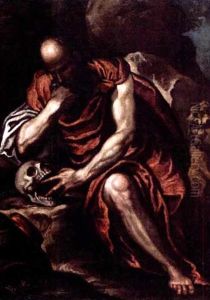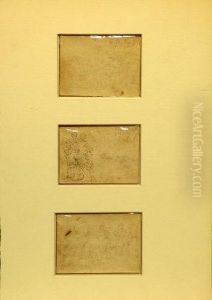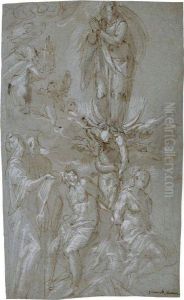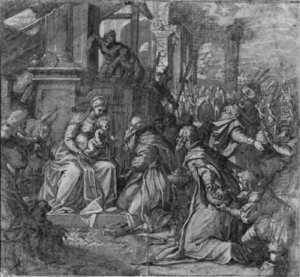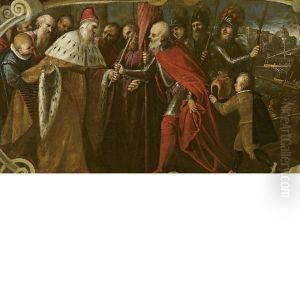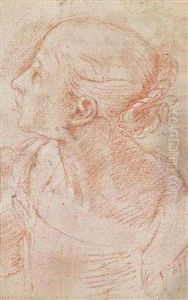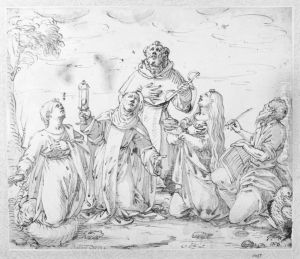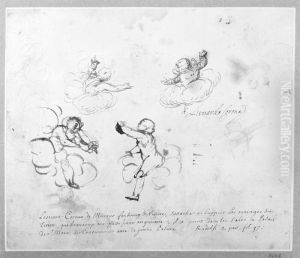Leonardo Corona Paintings
Leonardo Corona, born in 1561 in Murano, a series of islands in the Venetian Lagoon, was an Italian painter of the late Renaissance period. He is often associated with the Venetian school of painting, which was renowned for its rich color palette and innovative techniques. Corona's life and career were deeply intertwined with the artistic and cultural milieu of Venice, a city that was a major center for the arts during the Renaissance.
Corona's artistic journey began in his early years, likely under the guidance of local masters in Venice. Although specific details about his training are scarce, it is evident from his works that he was deeply influenced by the Venetian masters of his time, such as Titian, Tintoretto, and Paolo Veronese. These influences are visible in his mastery over color, light, and composition, which he skillfully employed to create vibrant and dynamic works of art.
Throughout his career, Leonardo Corona received commissions for religious and secular works, showcasing his versatility as an artist. He was particularly adept at painting altarpieces, a genre in which he could express his deep religious sentiment combined with his artistic prowess. His works are characterized by their dramatic use of light and shadow, a technique known as chiaroscuro, which adds a three-dimensional quality to the figures and imbues his scenes with a sense of drama and emotion.
Despite his talent and contributions to the Venetian school of painting, Corona's work was somewhat overshadowed by the more famous contemporaries of his time. However, in recent years, art historians and scholars have begun to reevaluate his work, recognizing his unique contributions to the development of Venetian painting. Today, Leonardo Corona is appreciated for his technical skill, his innovative use of color and light, and his ability to convey deep emotional and spiritual themes through his art.
Leonardo Corona's life came to an end in 1605. Although he did not gain the same level of fame as some of his contemporaries during his lifetime, his paintings continue to be admired for their beauty and technical excellence. His works can be found in churches and collections in Venice and beyond, serving as a testament to his skill and vision as an artist.
